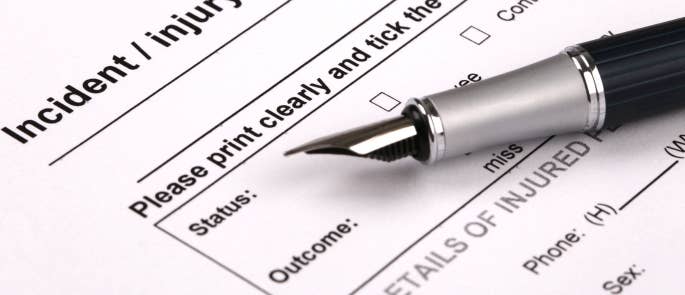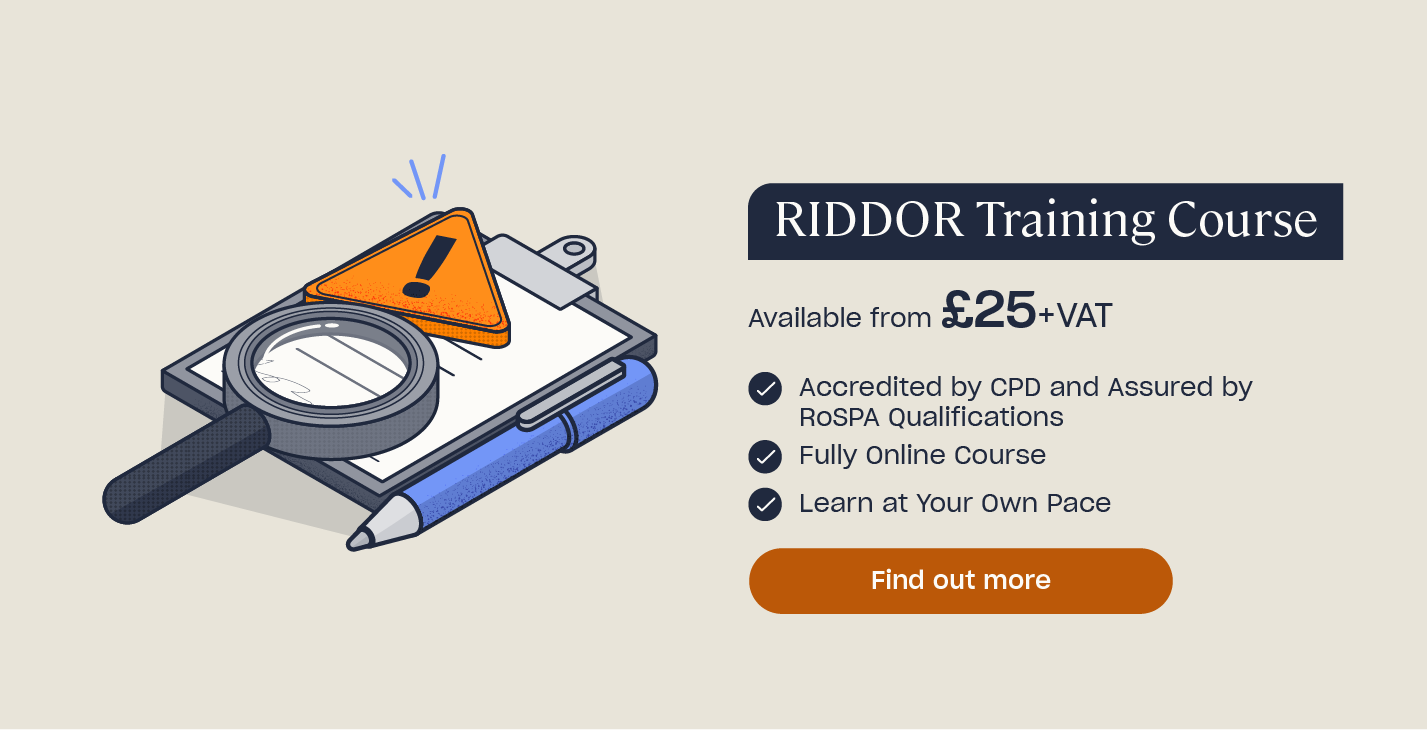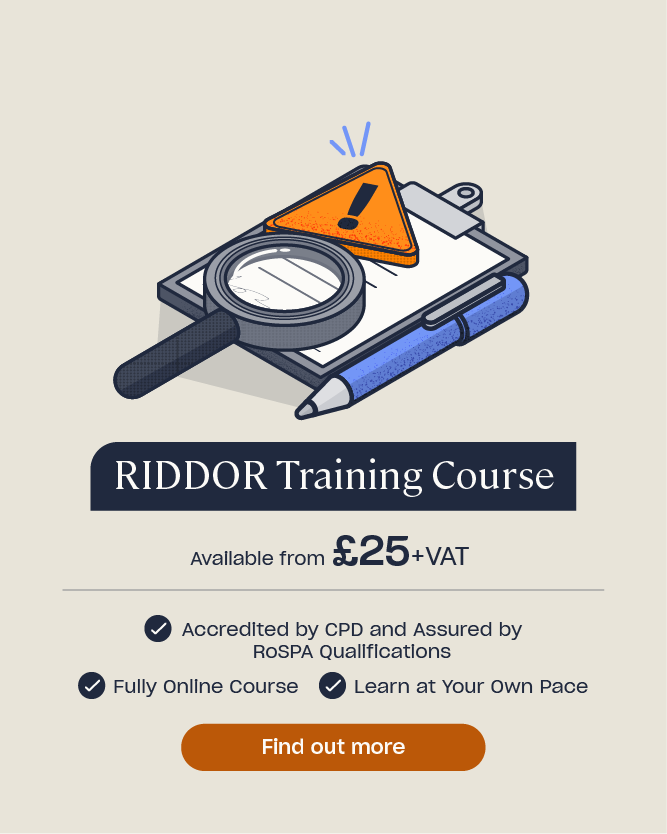The Importance of Reporting Near Misses in the Workplace
Near-misses are incidents that don’t cause any harm but could’ve potentially caused an injury or ill health. You might be tempted to brush off near-miss incidents as no one gets hurt, but it’s vital you don’t ignore them.
Just because it was a near-miss this time, doesn’t mean that it will be next time.
Examples of Near-Misses
A near-miss describes all incidents that didn’t cause harm but had the potential to. Below are some examples of near-misses that could occur in the workplace:
- An employee trips on the loose edge of a rug that they couldn’t see because of the poor corridor lighting. They manage to steady themselves by grabbing a bookcase.
- A customer in a busy restaurant spills their drink onto the floor. As the restaurant is busy and no glass has broken, the waiter decides to leave the liquid for a few moments while he continues to place an order. A colleague who has not seen the spilt liquid slips, but manages to steady themselves on the customer’s table.
- An employee in a large warehouse is walking down an aisle. Tall racking on either side reduces her visibility of oncoming traffic from around a sharp bend. She moves to leave the aisle not noticing the oncoming vehicle, but manages to jump back out of the way before it hits her.

Why Reporting Near-Misses is Important
In all three of these scenarios, the employees managed to avoid injury. However, they could have been seriously injured if they were not able to steady themselves or move out of the way in time. Therefore, it’s important that these events are reported so you can deal with the hazard before anyone gets hurt.
Your employees might avoid reporting near-misses or minor slips because they are usually seen as embarrassing or funny. The HSE suggests that there are around 90 near-misses for every accident that occurs at work. If you wait for that accident to occur before taking steps to prevent it happening again, you are taking a reactive approach to workplace safety.
Instead, you should take a proactive one. Create a culture that encourages employees to report any near-misses and use the information from incidents to review your risk assessments and control methods. By doing this, you could prevent accidents before they occur.
Want to Learn More?
RIDDOR is the law that requires responsible people in the workplace to record and report certain work-related illnesses and injuries. This RIDDOR Training Course provides a thorough introduction to RIDDOR legislation, explaining why incidents must be reported, which incidents need to be reported and how to submit a report online, by phone or in writing.
If you implement a near-miss reporting system, you’ll also:
- Encourage employee participation in health and safety matters. Employee participation is an essential component of creating a successful safety management system. Additionally, you’ll demonstrate that you’re invested in your employees’ safety and will promote a positive safety culture within your company.
- Motivate your employees to contribute to their safety, and the safety of their colleagues, in a responsible manner.
- Have enough data for performance measurement. You can measure the success of your current control methods and identify areas for review.
- Prevent similar accidents from occurring. When you take an active approach to health and safety, you can prevent similar accidents from happening. By doing so, you reduce the likelihood of an injury, fatality and destruction to property.

How to Report a Near-Miss
It is everyone’s responsibility to report near-misses. You should create a policy and procedure for reporting near-misses and ensure that all employees understand the process. It’s vital that you and your senior managers all enforce and support the reporting procedure to ensure that staff members follow suit.
Information Included on an Incident Report Form
When your employees report a near-miss incident, it’s important that they record:
- The time and date of the incident.
- Where the incident occurred.
- What work activities were being carried out before the incident.
- The type of incident.
- Details about what happened.
- The afflicted person(s) personal details.

RIDDOR
In addition to internal reporting, you must report some near-misses (dangerous occurrences) to the HSE under the Reporting of Injuries, Diseases and Dangerous Occurrences Regulations 2013 (RIDDOR).
The dangerous occurrences you must report include instances where:
- The load-bearing part of a lift or lifting equipment collapses, overturns or fails.
- An electrical short circuit or overload results in an explosion or fire.
- A dangerous biological agent is released or could have been released.
- A driving operation results in an explosion in the vicinity of a driver.
You can find the full list of reportable dangerous occurrences in Schedule 2 of RIDDOR. To understand more about how to report dangerous occurrences under RIDDOR, have a look at RIDDOR: How to Report an Incident or Accident at Work. You can also find our RIDDOR Training here.
Near-misses might seem unimportant, but you should see them as a warning and an opportunity to assess your hazard control measures. Near-misses help to expose less obvious hazards and it’s vital that you don’t just brush them off. Follow the guidance in this article to effectively report near-misses in your workplace.
What to Read Next:
- What are the Consequences of Poor Health and Safety?
- Workplace First Aid Training
- How to Protect Your Workplace From These RIDDOR Incidents
- What is RIDDOR & Why is it Important?
- RIDDOR Training











